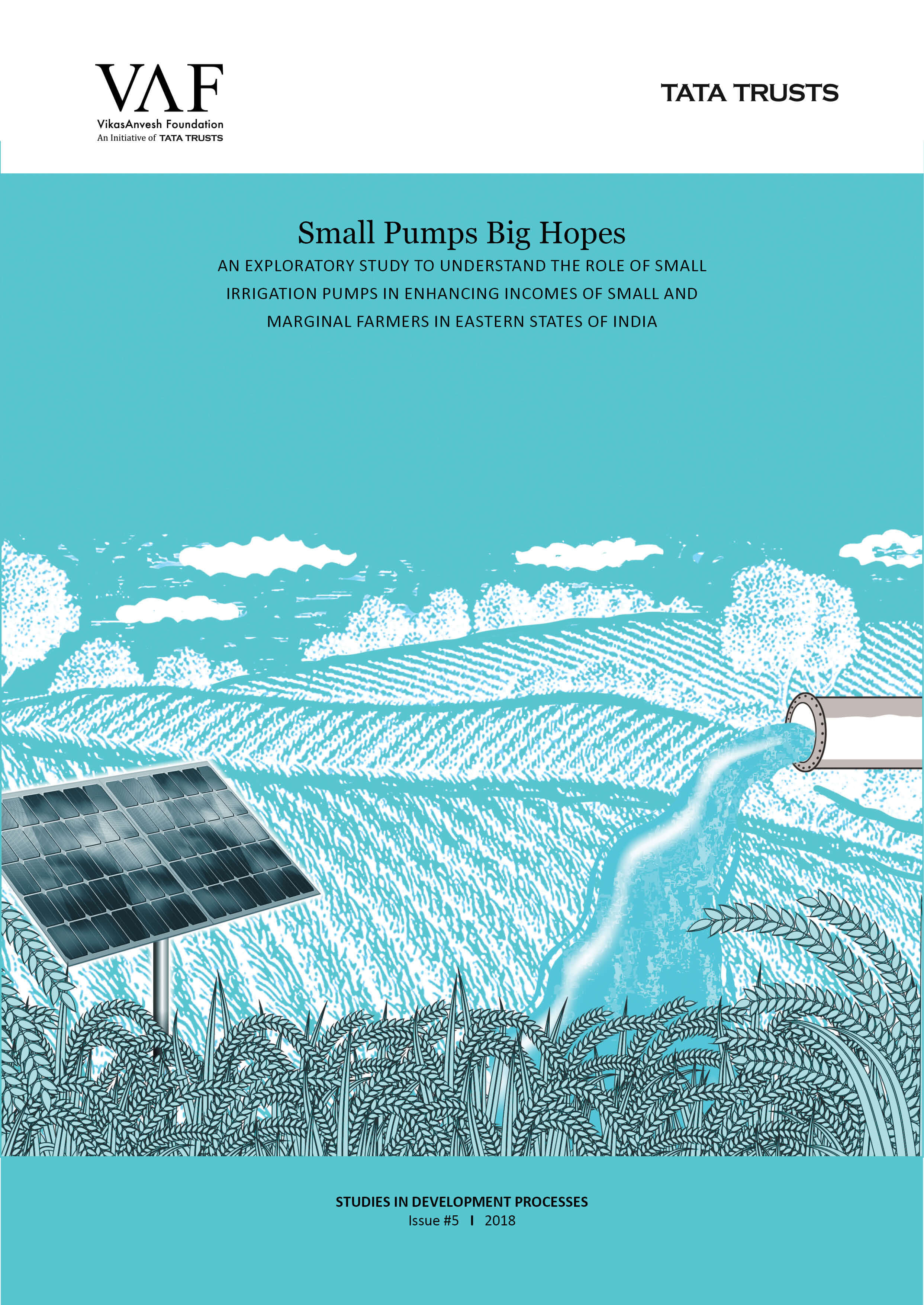Studies in Development Processes Issue#5
Author : Bikalp Chamola
Indian farmers still continue to depend on the vagaries of monsoon for agriculture. As per the
Agriculture Census of 2011, only 45% of the gross cropped area is classified as irrigated. The
primary reason for this is the lack of adequate irrigation infrastructure. In the larger context,
conspicuous disparities exist between the eastern states and the other states of the country in
terms of gross cropped area, irrigated area and agricultural productivity. This clearly overshadows
the higher availability of groundwater in the eastern states. With surface and sub-surface water
sources being within the reach of farmers in the eastern states, emphasis has not been placed on
developing region-specific irrigation alternatives.
We conducted a study in order to understand the role of small pumps in enhancing
the farm incomes of small and marginal farmers. The fieldwork was done in five
districts of three states, Assam, Jharkhand and Odisha with a total sample size of
176 farmers. Purposive sampling was used. Four categories of pump users were
identified: those with a) only small pump, b) only large pump, c) small and large
pumps, and d) no pumps. Comparisons were done on the basis of indicators
pertaining to user context, agronomy, technical features of pumps, crops grown and
economics of the pumps.
The study highlights that small diesel and solar pumps, by virtue of being easily transportable
from one place to another, are effective for small and marginal farmers in areas of higher land
fragmentation. Irrigation intensities (total number of hours the pumps is used) of small pumps are
double that of large pumps during Rabi in all the three states. Despite higher horse power available
per net sown area, farmers using large pumps have lesser net area under irrigation compared to
those using small pumps. In all the three states, income per hectare of farmers using small pumps is
higher than those with large pumps. The small pumps therefore, have the potential of transforming
the agricultural landscape in the eastern states of Jharkhand, Odisha and Assam, if used on a large
scale by small and marginal farmers.
For further details about the study please write to us at [email protected]

